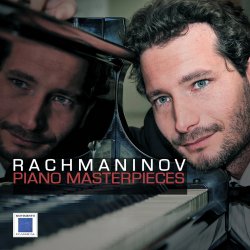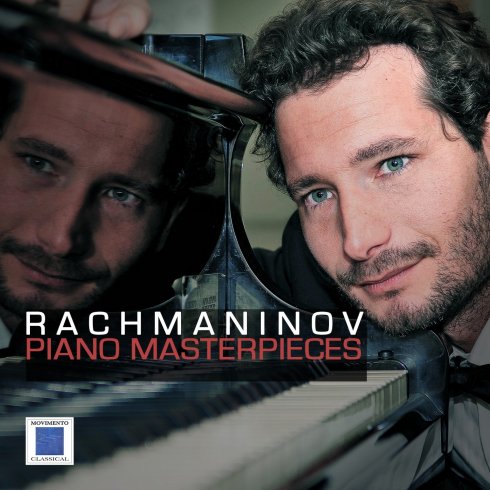

Piano Masterpieces
Marco Ciampi
Rachmaninov
The Rachmaninoff’s Music was not present in the programs of the competitors only some isolated and popular pieces/tracks, we were confronted as virtuosos with the Liszt’s Sonata in B minor and some Transcendental, Chopin’s Studies, or Balakirev’s Islamey and the Ravel’s Gaspard de la nuit, but the Sonata in B minor was the boulder with which it was necessary to measure itself to make a name among pianists. There were also those who aimed at a different repertoire, and then measured themselves with the Mephisto Waltz or the sixth Hungarian Rhapsody of Liszt like the dear Michele Campanella who was "our" Horowitz. In 1974 Rachmaninoff's Rhapsody on Paganini's Theme, whose orchestral part was very difficult to accompany even in the piano reduction, appeared in a competitor's rehearsal with orchestra. I remember that the second pianist was in difficulty, so much so that he abandoned the commitment which was then completed by a generous competitor who played the Orchestral part in a wonderful way and by heart, so much so as to bring his rival to victory. The Neapolitan Academy which organized the Piano Competition, also organized in that hall an interesting Concert Season where we were always present. I personally was even luckier to have a very dear friend like Gianni Cesarini, who later became a music critic, who had an important record store, where the best of Neapolitan culture and not met. There I learned to listen critically to an infinite record heritage, and I also hijacked my dear friend Sergio Fiorentino who became precious even for Gianni Cesarini. Fiorentino was for us a direct source of knowledge of piano music, including Rachmaninoff, he played the whole repertoire, EVERYTHING. Despite Rachmaninoff’s numerous records as pianist, we all fell in love with Horowitz’s pianism, his Rachmaninoff’s Sonata sounded so overwhelming that you could not be indifferent to those strong emotions.
Fiorentino, meanwhile, had begun to disseminate in Italy the second Sonata, Preludes and other compositions, and had already played the Third Concerto for piano and orchestra at a very young age in Naples, but it was difficult to spread the repertoire of the Great Russian since the scores didn’t circulate. At the end of the 70s, with my appointment as Artistic Director of the Municipality of Morcone, (a small Country of the Province of Benevento then led by Tommaso Paulucci, far-sighted Mayor), the "Accademia Murgantina" was born. This Municipal Civic School of Music,with the help of the Maestro Fiorentino and of all the common friendships, became for over a decade the alternative to the “Accademia Chigiana” of Siena. Great pianists of the international scene took part in it, with master classes where the boys studied without spending a penny. Then with Fiorentino we gave a turning point to the spreading of the music of the Supreme Russian, by launching the International Piano Competition "Sergei Rachmaninoff11” of Marcane still known internationally today.
Many pianists wrote to us from the farthest places on earth, many of whom came to Marcane, and with the Horowitz’s push they all began to play the second Sonata, and the more they made noise, the more they ran, the more they liked it... Rachmaninoff gave a different satisfaction and the pianism was completely new. Horowitz had invented a way of playing Rachmaninoff of great emotional impact, but completely different from the taste and elegance of Rachmaninoff himself. Today the trend is still the same, even if something is changing, but it is difficult to grasp the elegance of that so noble Music of a very serious pianist and not exhibitionist, but we still had more refined pianists in Marcane. Even the majority of Russian pianists do not know how to grasp the elegant and noble character of Rachmaninoff's pianism, they have in fact an aggressive and visceral way of dealing with music, they "dig" a lot, close to the old Neapolitan School criticized very much by Vincenzo Vitale who, when he listened to the essays of some piano classes, said: "Now they put the nails" in dialect. Unfortunately many young musicians lose years of study to imitate their favorite models and do not strive to form their own critical, stylistic, and philosophical thinking; moreover plastered in a bad school of fidelity to the text that gets used to reading the signs and reproducing them, but not to understand which set they are part of and to be capable of their own ideas, even different from that of the composer. No instrumentalist plays his music as already written, the ways of looking at the text are endless, like when you look at a landscape, you see everything at a glance, but you can also stop on details. You have to have your own idea, to convey something that you know how it starts and ends, and that doesn’t have metronome time, but breathes because it’s alive. The performer tells his music, which is why he’s called interpreter.


Marco Ciampi
He graduateci in Piano and "Musical Subjects" with the highest marks and honours al "San Pietro a Majella" Conservatory of Naples. He studied piano with pianist Annamaria Pennella (student of A. Benedetti Michelangeli and M. Long), completing his training with the pianists: Ciccolini, D'Alessandro, O. Maione, Nicolosi, Parente, Pompa-Baldi.
He won the first prize in more !han thirty national and international piano competitions and he performed al some of the masi prestigious venues in the world: Moscow lnternational Music House, Carnegie Hall in New York, Seymor Theater in Sydney, Sala Felipe Villanueva in Toluca, "La Fenice" Theater in Venice, "Coccia" Theater in Novara, "Sala Scarlatti" in Naples. He also played in France, Great Britain, Belgium, Mexico, Uniteci States, Germany, Norway, Spain, Romania, Serbia, Macedonia.
His performances were broadcast by Rai 3, ABC Classic Radio (Australia), Serbian Radio Television, Vatican Radio, Radio Classic Moscow. He has collaborateci with artists such as Luis Bacalov, Enzo Decaro, Flavio lnsinna, Sun Hee You, Salvatore Quaranta, Alberto Pizzo, "Teatro di San Carlo Quarte!" and orchestra such as Camerata S.Pietroburgo, State Orchestra of Mexico, Milli Reasurans Istanbul Chamber Orchestra, Philarmonia Mediterranea Orchestra etc.
He taught "T ransport and reduction al the piano", "History of Piano" and "Piano" in first and second degree courses in several ltalian Conservatories.
